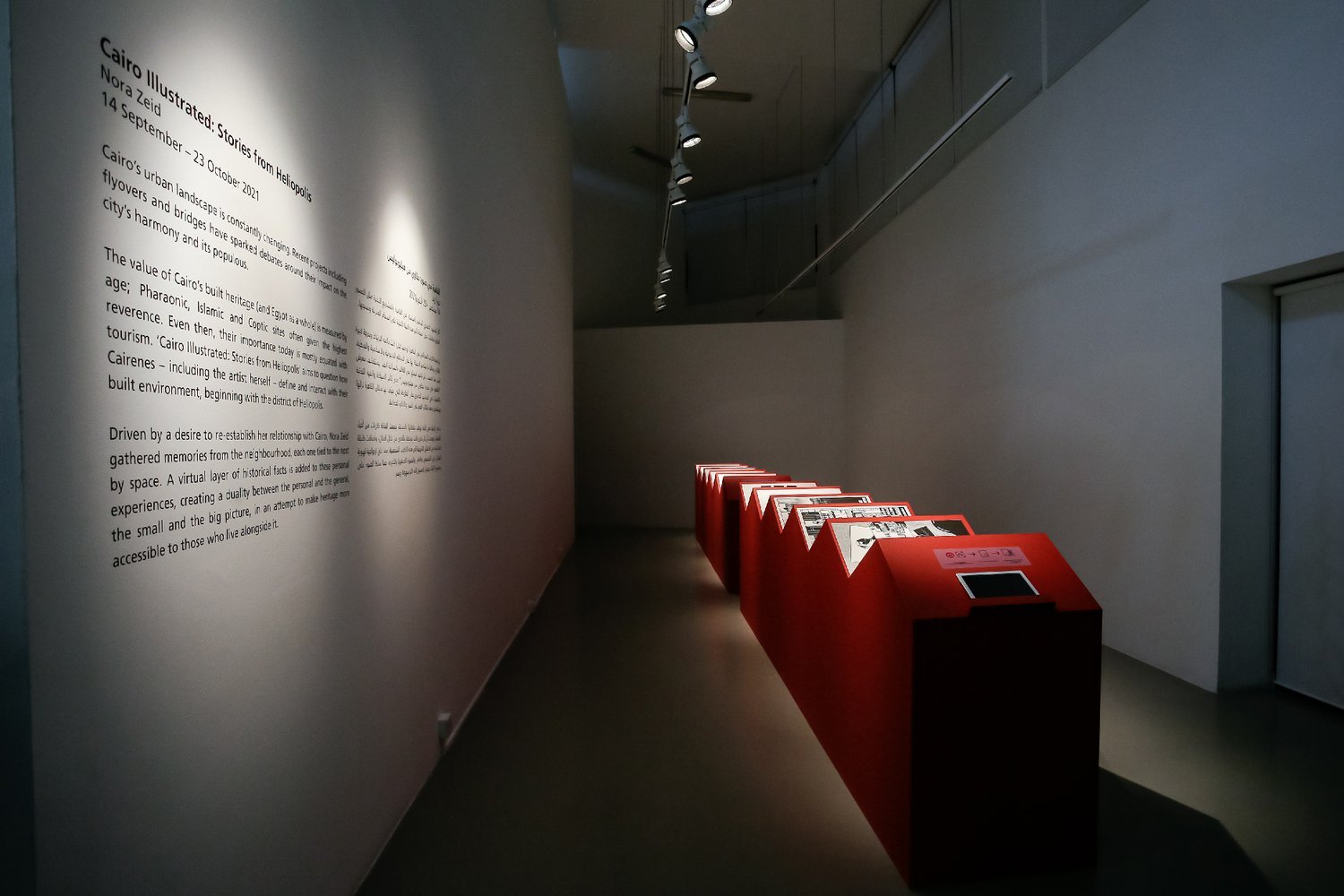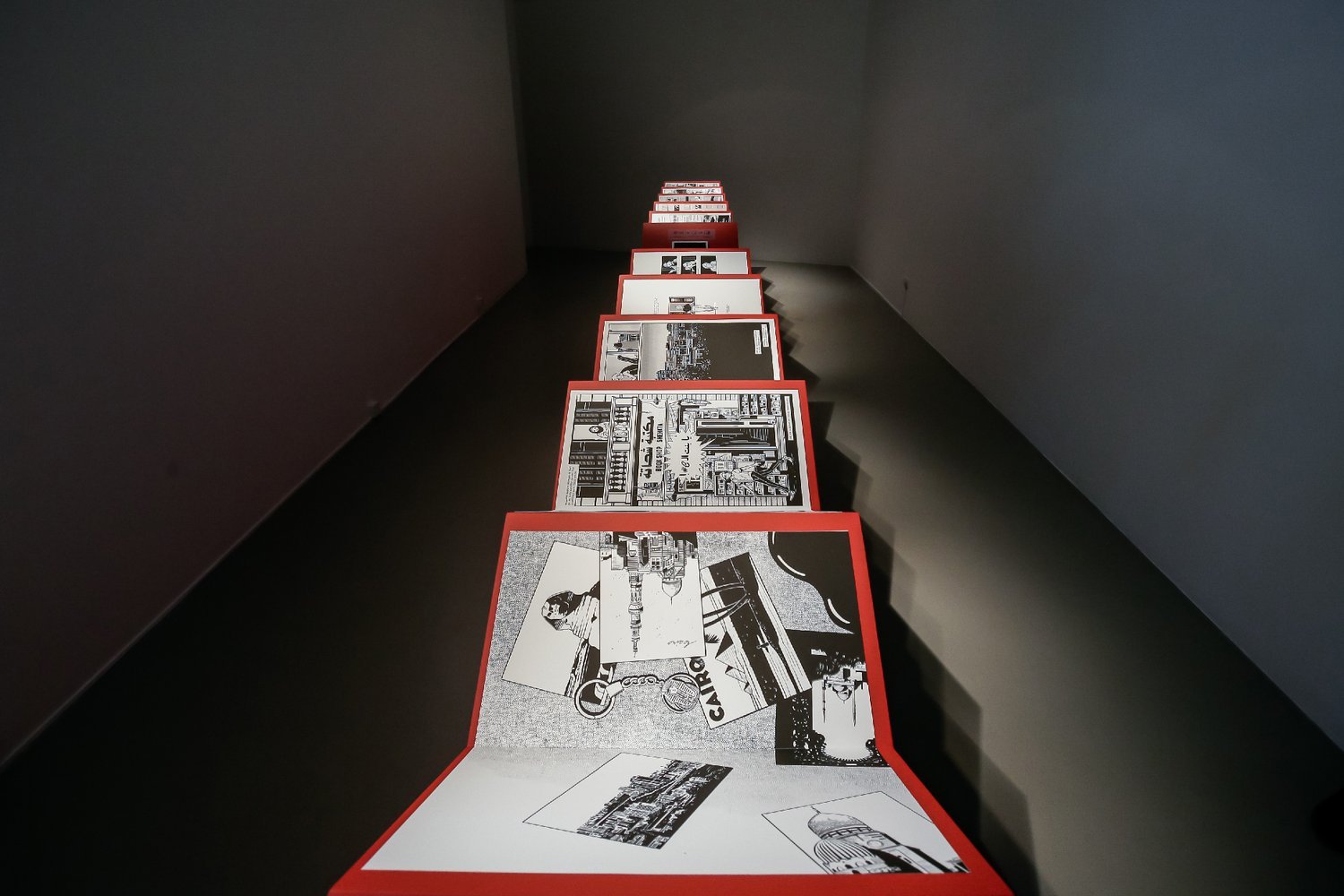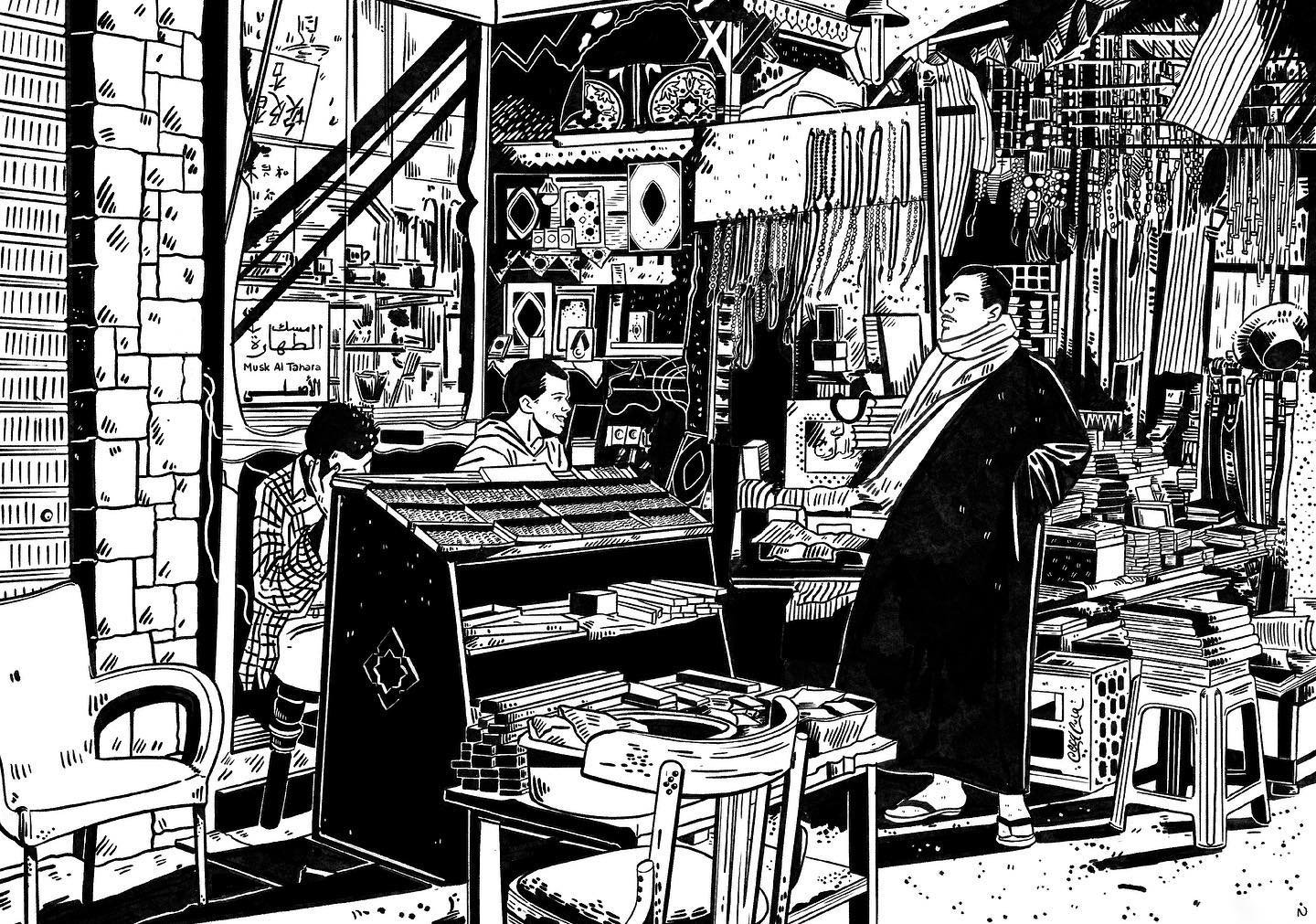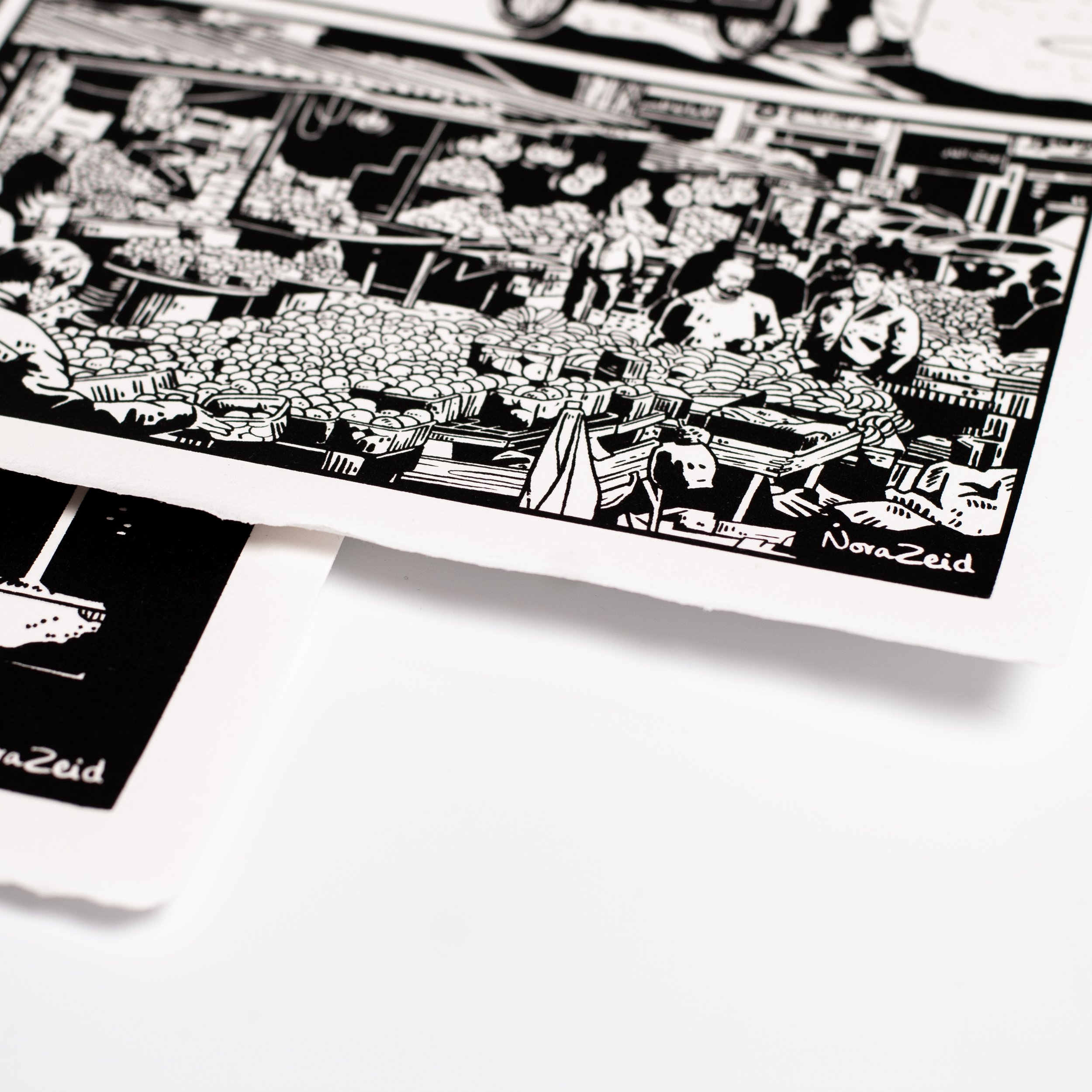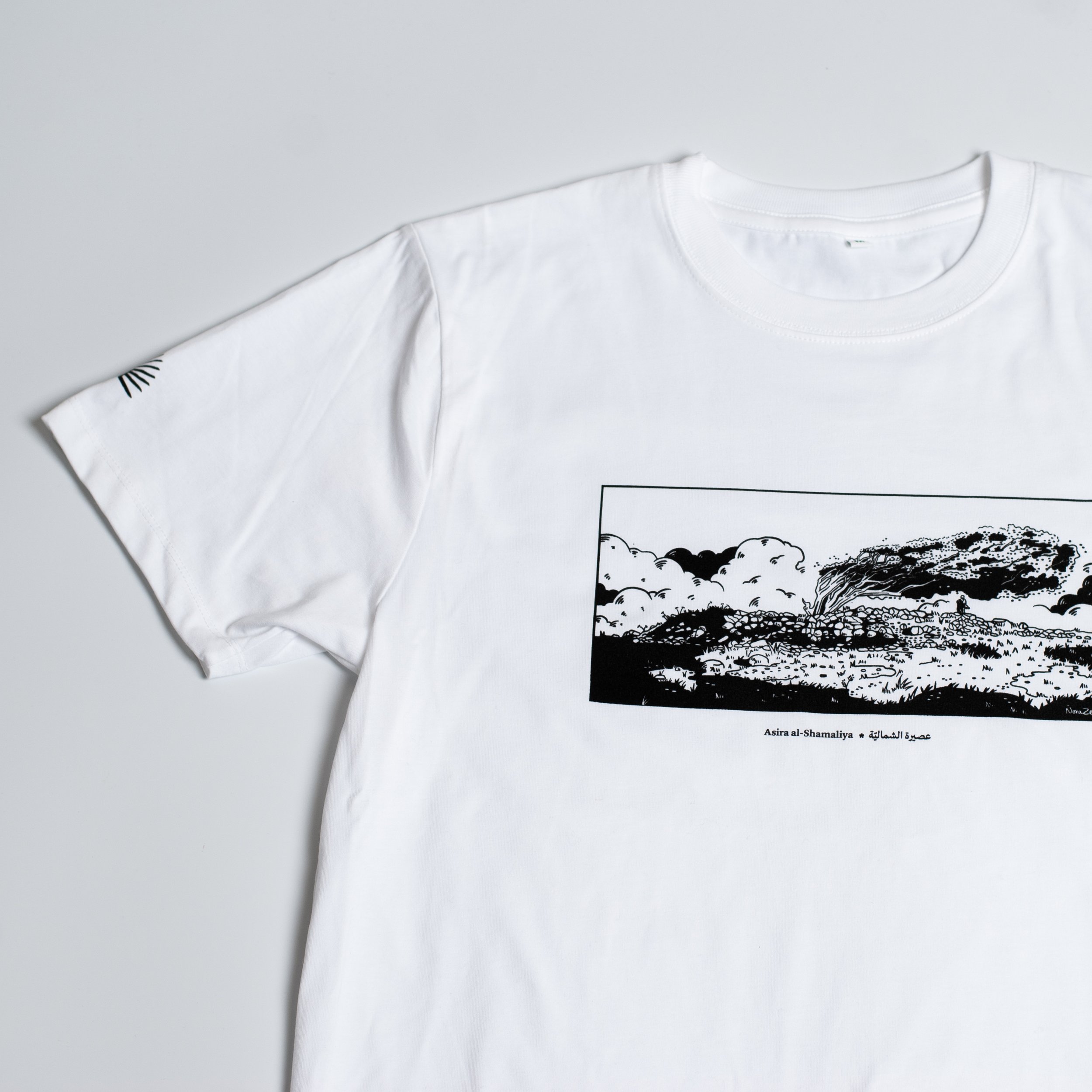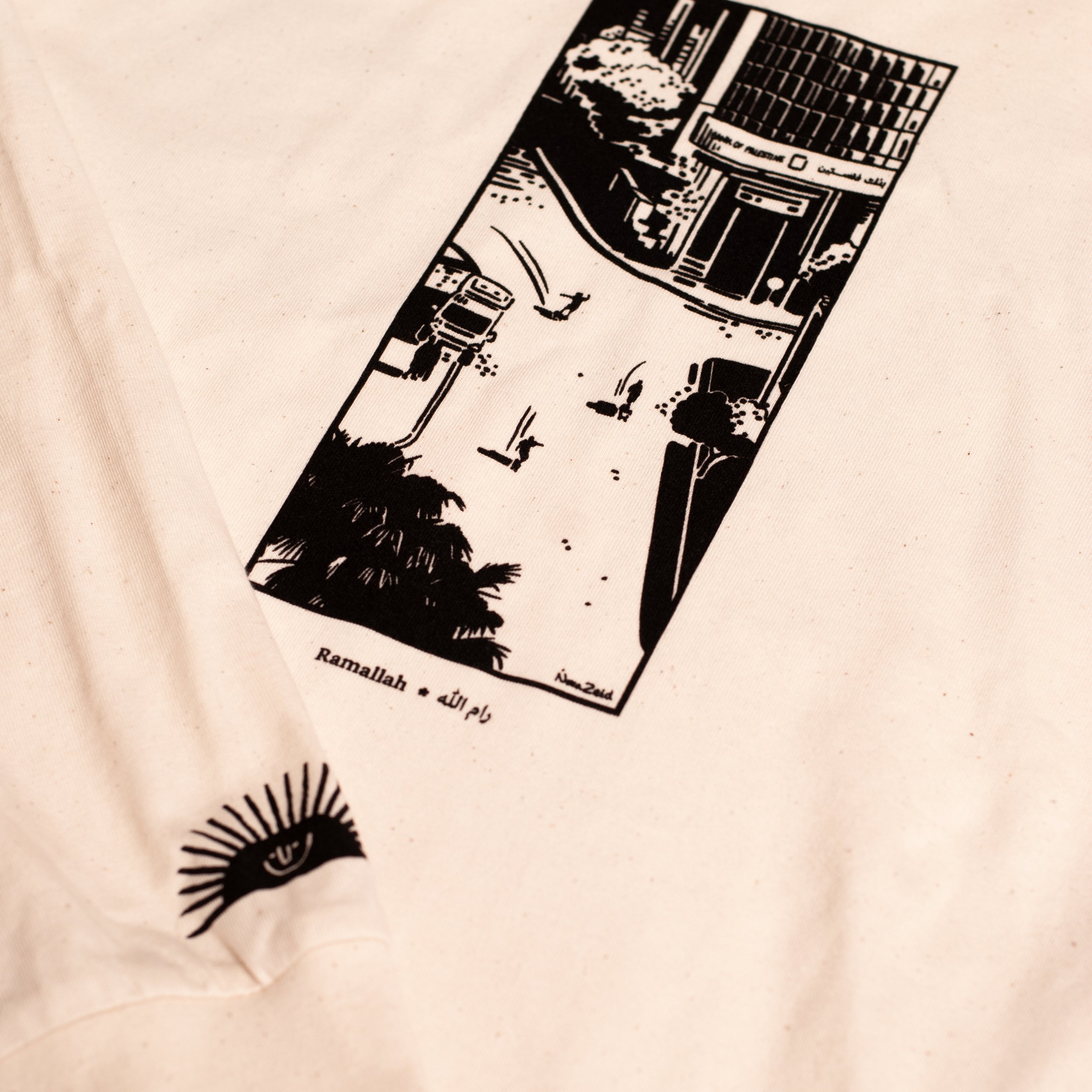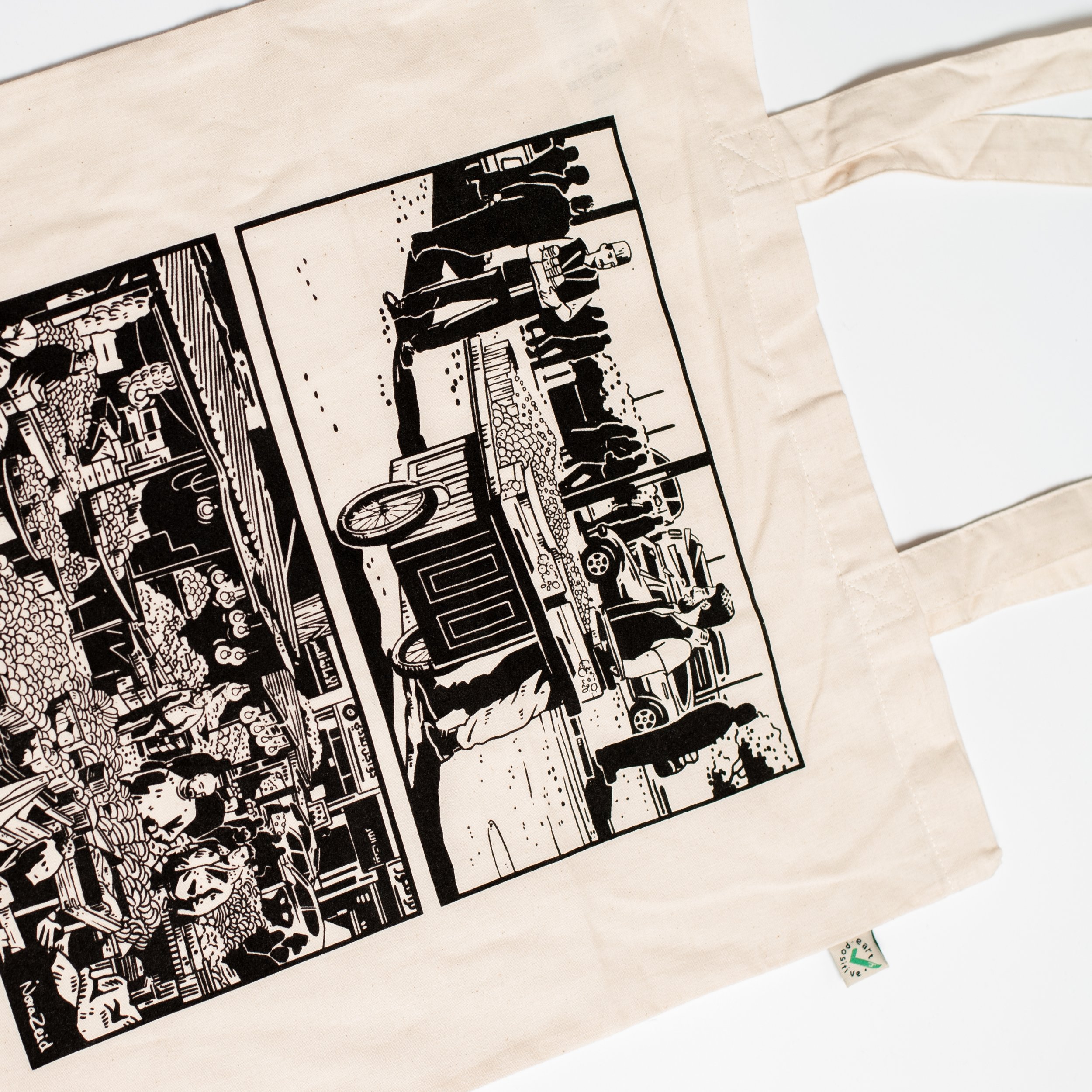EXPLORING HERITAGE WITH NORA ZEID
Nora Zeid is an Egyptian independent illustrator and visual artist based in Dubai. Coming from a graphic design background, Nora shifted the focus to her practice in early 2021, building a roster of clients including Google, VICE, Diwan Publishing and Kerning Cultures. 2021 saw her first solo exhibition entitled ‘Cairo Illustrated: Stories from Heliopolis’ in Dubai, followed by another solo show: ‘Cairo Illustrated’ in Cairo in 2022. We worked together with Nora on SkatePal’s new merch capsule collection dedicated to three locations in Palestine where SkatePal is currently active, showcasing the beauty of the everyday life in the West Bank.
What inspired you to pursue illustration?
The simple fact that I love drawing. I’ve always been a problem solver and to be able to do that through illustration is something I really enjoy.
How did you find moving from design work into full time illustration?
Quite smooth actually. In each case when it comes to commercial work I need to follow a process: to establish touch points, exchange ideas with my clients and deliver designs in a way that best suits the project at hand.
How do you find working with more commercial clients vs on your own projects?
I enjoy both for separate reasons. I like working on commercial projects because I get to work alongside individuals from different fields, learning about what they do so we can best cater to the project at hand. It’s exciting and rewarding, especially when the process is collaborative.
With my own projects, I can be more experimental and toy around with ideas. The process is comparatively slow and steady. Naturally, I pick up the pace when an exhibition date or deadline approaches, but all in all, it brings me peace of mind.
In both cases, I really enjoy the moment when the project is out in the world. Watching people interact with the work and interpreting it in their own ways is a gift.
Cairo Illustrated: Stories from Heliopolis exhibition
You translate colourful, busy scenes and environments into monochromatic illustrations, can you tell us why and what does your process look like?
My process relies on research and photo-documentation to achieve an authentic depiction of the spaces I’m illustrating. This allows me to capture as many details in the moment as possible. When I illustrate in black and white, I am simplifying while maintaining the landscape’s details and complexities. That way, I invite viewers to notice things they might not have noticed before.
Palace of Desire (1957)
In 2020 you participated in the Tashkeel's Critical Practice Programme. How did you find it and how has it supported you and your work?
It was a very positive experience. When HRH Lateefa bint Maktoum founded Tashkeel a little over 10 years ago, she did it with the intention of building a nurturing environment for artists and practitioners. That’s what it was for me.
Tashkeel was a quiet pocket of peace to focus on my practice amidst the hustle and bustle of commercial work. I was given access to resources and workshops which were invaluable to my growth. The team was also lovely, as were my amazing mentors, Hala Al Ani and Ghalia Elsrakbi, providing me with the guidance and support I needed at that point in my career, challenging me every step of the way.
What are some of your favourite motifs to illustrate or what is your favourite illustration you’ve made so far?
I really enjoy illustrating balconies and the facades of buildings, notably in Cairo. One of my favourite pieces so far is ‘Somewhere in Aswan Street, Heliopolis’ (2022).
Somewhere in Aswan Street, Heliopolis (2022)
Can you tell us a bit about Cairo Illustrated: Stories from Heliopolis, your first solo exhibition?
Cairo's ever-changing urban landscape and recent projects such as flyover bridges have been sparking debates regarding how such infrastructural changes affect the city’s harmony. The value of built heritage in Cairo – and Egypt as a whole – has been greatly tied to age, its celebration often reserved to pharaonic, Coptic and Islamic sites. Even then, their value is mostly linked to tourism.
That being the case, I was driven with a desire to re-establish my relationship with the city. I gathered memories from the Cairene neighborhood of Heliopolis, tying each memory to the next by spaces of heritage. This created a duality, between the personal and the general, the small and the big picture, making the topic of heritage more accessible. The result was a story displayed like a graphic novel, on large red plinths, where visitors could walk around the exhibit, reading people’s stories, linking them to thoughts on what heritage means and how it ought to be valued and conserved.
How did you find working on a project of this scale?
Challenging. Up until that point, I’d mostly worked on a smaller scale, so the shift was very exciting.
The exploration of heritage, its preservation and changes brought by tourism and evolving infrastructure can resonate across many countries. How was the exhibition received in Dubai?
Quite positively. It was interesting because, given that Dubai is multicultural, visitors came from different backgrounds. People related what they were seeing about Heliopolis to what’s happening in their own neighborhoods and cities.
What inspired you to focus on Cairo, specifically مصر الجديده or Heliopolis?
I decided to focus on Cairo as it is my hometown, Heliopolis specifically as most of my family – parents and grandparents – spent their lives there.
Another reason was to highlight how people of means – myself included – escape and neglect certain neighborhoods in Cairo to live in the peripheries of the city (in 6th of October or New Cairo), when a hundred years ago, the same neighborhoods they are now escaping used to be in the periphery (Heliopolis was 14 km out of the city back in 1900). My intent was to show how we, as people, have been stuck in a vicious cycle of seeking what’s new instead of mending and caring for the spaces we live in, and recognizing them as part of our heritage.
Growing up in a different city and country is something many Palestinians in the diaspora can identify with - how did you find your relationship with Egypt and Cairo and how did you manage to connect with it throughout your life?
It was tricky. As most third culture kids will tell you, I found myself torn between where I’m from and the places I’ve lived, never quite belonging to either. I did travel back to Cairo twice a year growing up, which helped me stay in touch with my roots and family during my formative years. It also helped that our parents insisted we learned how to speak and write Arabic. I’m grateful for that.
During the last two years, I’ve been travelling to Cairo as often as possible, connecting with the city’s vibrant music, art and design scene, making friends and soaking in the city, with all its ups and downs.
How do you feel the city has changed over the years?
I don’t think I can answer that question accurately, as I haven’t lived there in a long time. That being said, no one can deny the questionable infrastructural projects which have been erected all across the city, literally slicing through neighborhoods. The destruction of heritage and decrease in green spaces as a result breaks my heart. At the same time, conservationists and heritage experts continue their efforts to safeguard the city. An example is the Egyptian Heritage Rescue Foundation, who I’ve started working with on a project alongside project manager Omniya Abdel Barr. Their approach to conservation is one that is scalable and sustainable, involving local communities in restoration and maintenance activities, notably in Bayt al-Razzaz, an old Mamluki house in al-Darb al-Ahmar, Old Cairo. Half of the house has been restored while the other half is still in a precarious state. I feel that institutions and individuals such as this need and deserve our support, because they’re the future.
Khoos Baskets, Somewhere in Maadi
Old New stand, Somewhere in Maadi
In another interview you mentioned you find drawing therapeutic in your daily life, how would you describe the relationship between this and your mental health? Especially having turned a hobby into your full time career.
Illustration is still very therapeutic for me, especially when I work on personal projects. It’s a blessing to have been able to turn my passion into a full time job.
However, I also found myself facing a challenge: how do I take a break from drawing when drawing is my escape?
I asked fellow illustrator and artist, Ahmed Gamal, and he suggested I get a second hobby. I’ve since picked up reading again and avoid drawing on Saturdays. It has had a positive impact on my mental health these last few months.
What are some of your plans for the future?
I intend to continue working on my ‘Cairo Illustrated’ series, expanding it to include more neighborhoods in Cairo, shedding light on our modern and contemporary built heritage. I also want to pursue efforts in giving talks and workshops about commercial illustration, so that I may contribute to helping young creatives transition from studying in academic environments to confidently working in commercial ones.
Where can we see/follow your work?
You can follow my work on Instagram at @itsnorazeid. I also go under the same username on Twitter. My website is norazeid.com
Chill Shopkeepers, Somewhere in el-Moez
Our collab capsule merch collection pays homage as well as showcases the everyday activities of three locations in Palestine with particular significance to SkatePal.
For this we chose Asira Al-Shamaliya, Ramallah and Bethlehem, three places where we run regular skateboarding classes in 2021.
Nora’s illustrations giving an introduction into the tranquil and remote Asira, busy and vibrant Ramallah as well as active Bethlehem are available as A3 prints as well as t-shirt, longsleeve hoodie and a tote bag. All through our shop.











